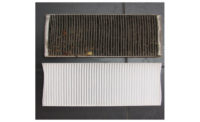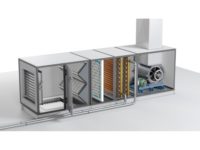Industrial fans and exhausters are critical components in many industrial processes; therefore, they are subject to the requirements associated with an increase in equipment life and a decrease in the total cost of maintenance.
It is often required that fans and exhausters operate at the limit of their technical capabilities. The higher the rotational speed of the fan blades, the higher the operating temperatures.
Fan modernization begins with an assessment procedure — a functional analysis of the equipment and an assessment of current faults. As a result, recommendations are issued on how the modernization should be carried out.
The blower wheel is the most important component to regulate and control the air movement in the industries. A comparison of the characteristics of the original and modernized blower wheels showed the modernized fan impeller provides an increase in air consumption by 24%-30% at the same fan speed. The most dangerous from the point of view of the strength of the impeller are inertial loads from the rotation of the fan, which cause a concentration of stresses in the zones of the junction of the blades with the hub in the region of the leading and trailing edges.
Retrofitting of fans is the use of improved bearings and housings, lightweight pulleys in V-belt transmission, using tapered bushings and automatic lubrication systems.
The modern bearing’s housing design allows to apply an automatic lubrication system, which is a preliminary flask filled with grease with an emptying mechanism (lubricator). It can work without the participation of mechanics for a specified period — from a month to a year.
Bearings are essential factors in extending fan life. The retrofit is being carried out to reduce operating temperatures and includes optimized bearings and housings as well as a new oil circulation system. Lower operating temperatures result in increased reliability, reduced maintenance costs, and increased machine life.
Many fans are used to pump hot gases with temperatures ranging from 212°-1,112°F. Some of this heat is transferred to the bearings as a result of radiation heat transfer and thermal conduction of the fan shaft.
Operating at high temperatures can lead to bearing failure, which in turn causes unplanned shutdowns, downtime, and production losses. High operating temperatures also have a negative effect on bearing lubrication as they shorten the life of the base oil. Deterioration in the lubricating performance of an oil means increased bearing friction, insufficient lubrication, and possible bearing failure, which increases the risk of unplanned shutdown.
The listed solutions allow a technician to optimize the process of modernization of industrial fans as well as increase reliability, safety, and performance. This increases the total time of failure-free work as well as reduces downtime, maintenance, and repair costs.
The main goal of implementing these technical solutions is to help improve the efficiency of the production process and equipment’s return on investment.






